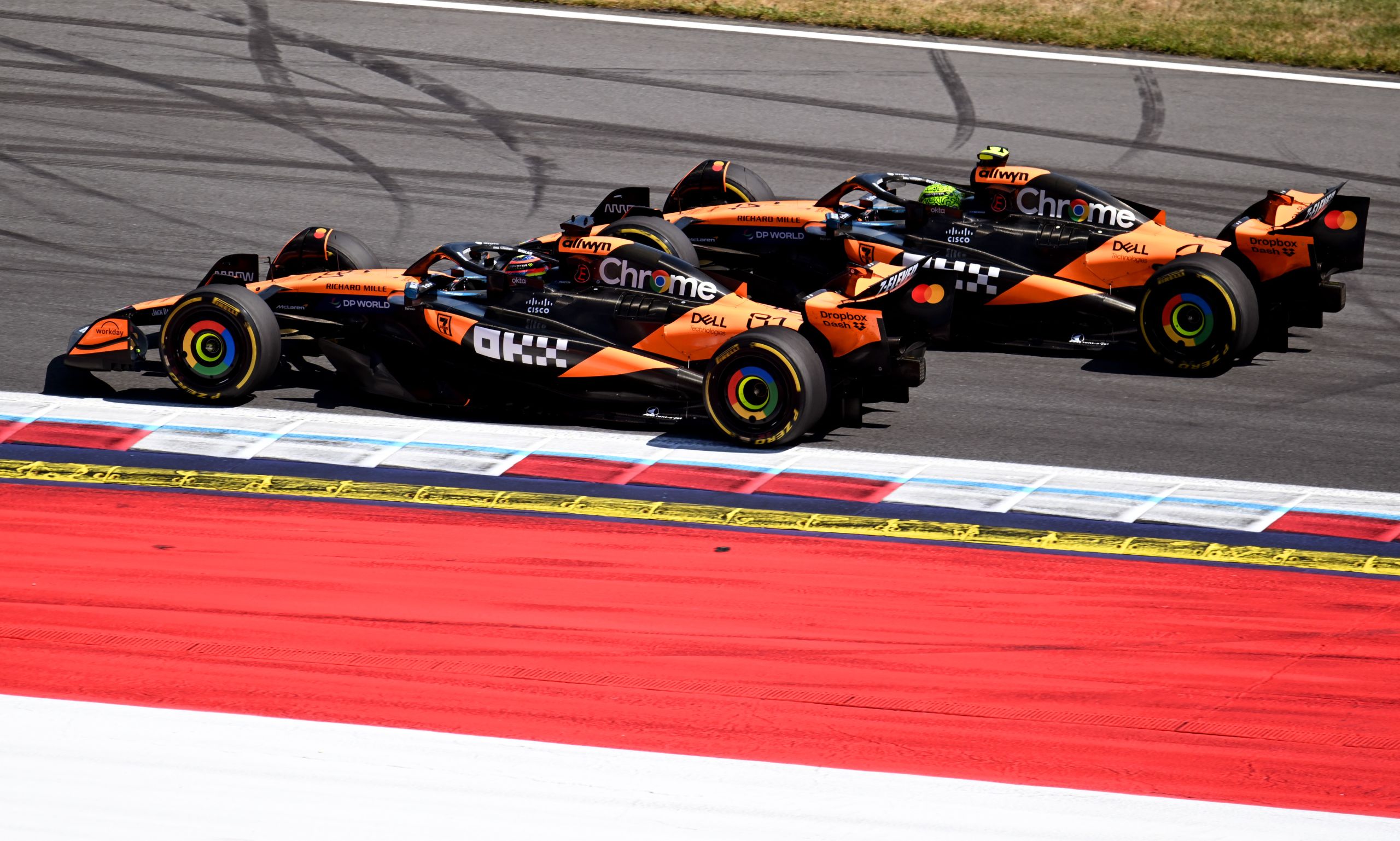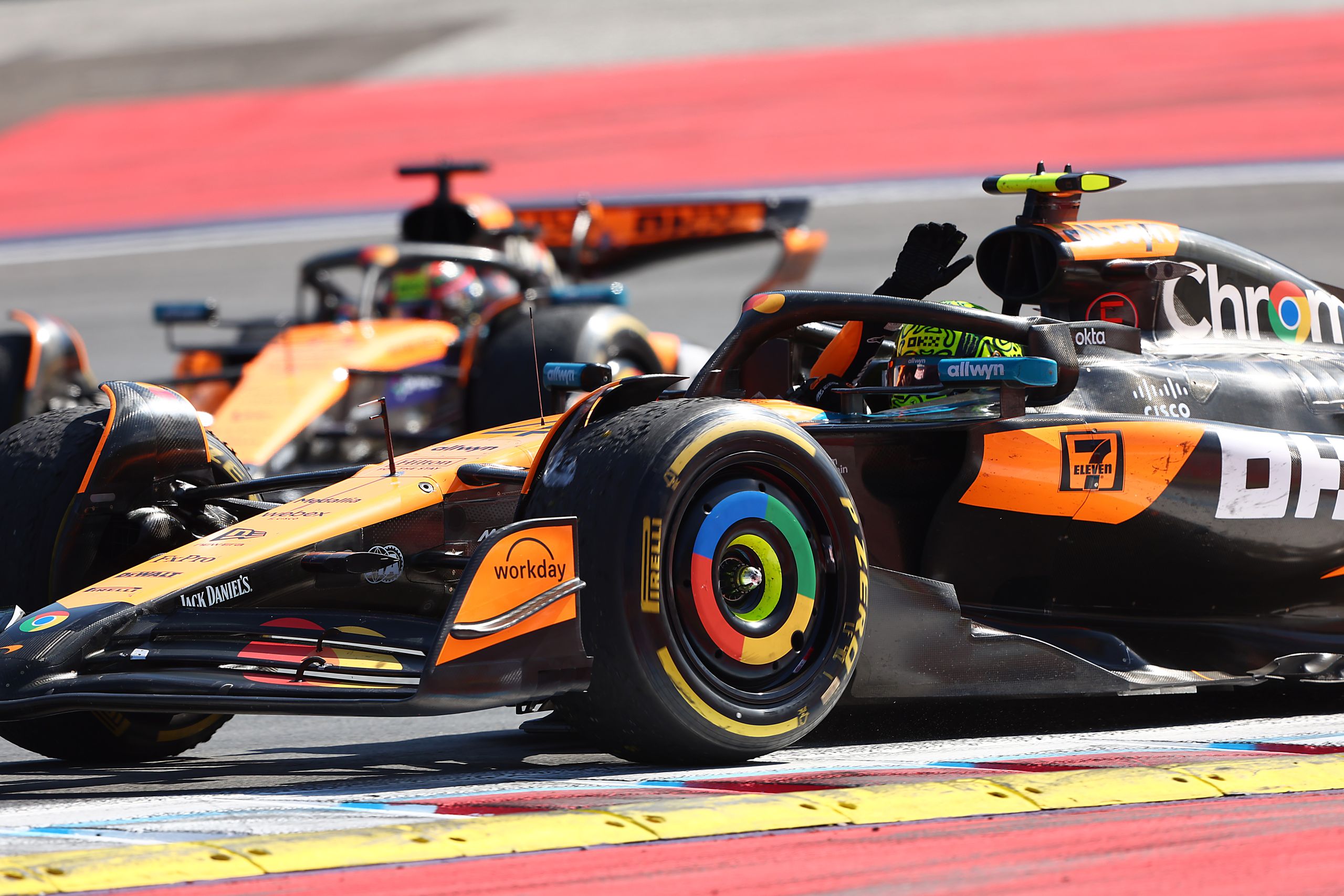How Do Corporate Partnerships Work in Formula 1?
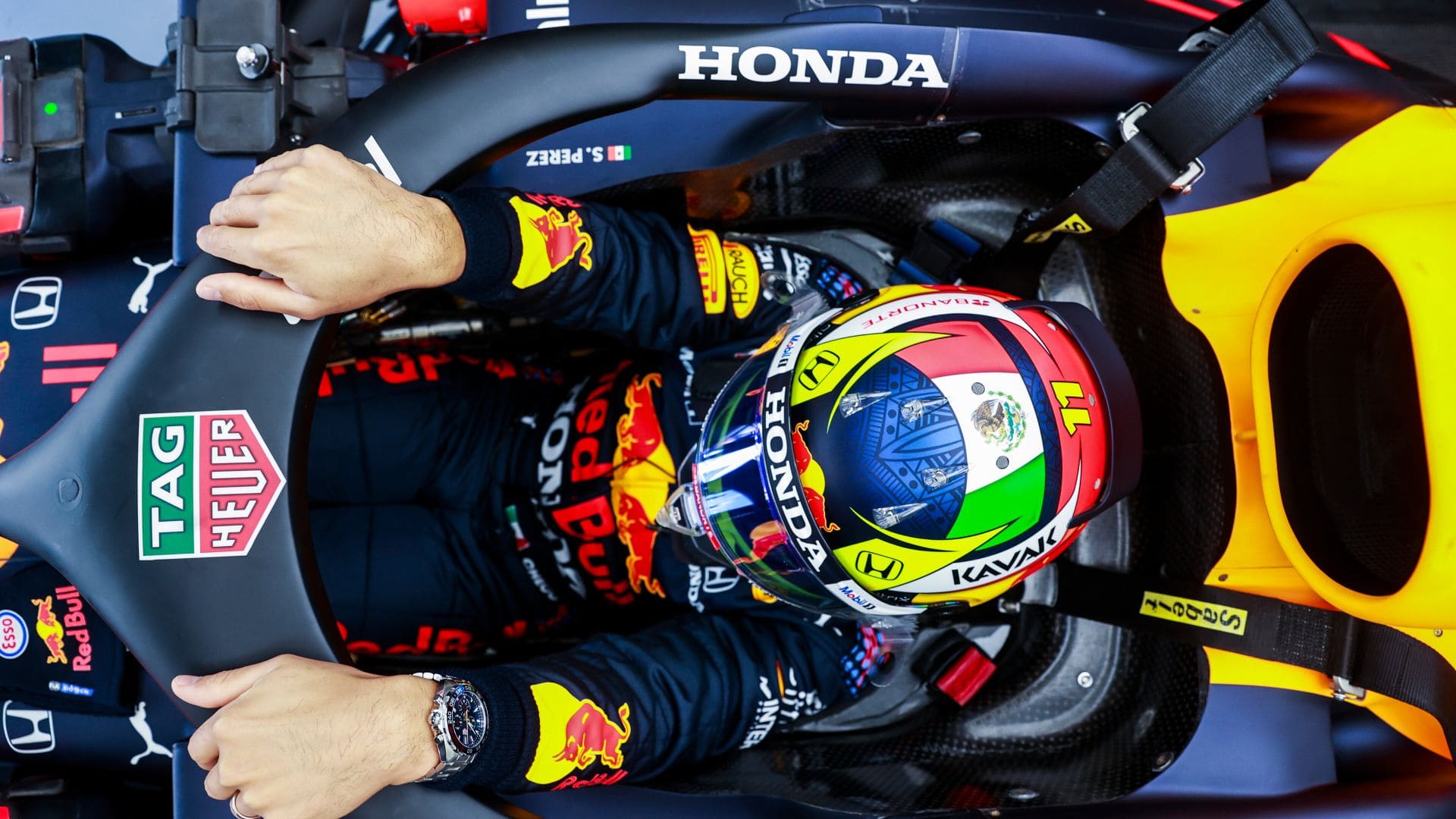
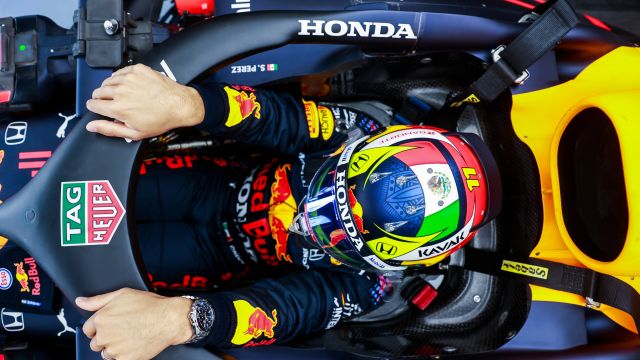
Formula 1 is not just about high-speed racing; it is also a complex ecosystem involving various corporate partners who contribute significantly to its success. Understanding how these partnerships work is crucial for appreciating the dynamics of the motorsport industry and the role that stakeholders play in it. Corporate partnerships in Formula 1 not only influence the teams and drivers but also form an essential aspect of its financial, technological, and marketing strategies.
In this highly competitive realm, brands from diverse industries form alliances to gain maximum exposure and capitalize on new opportunities.
Corporate partners play an indispensable role in shaping the racing experience for fans, pushing technological innovations, and expanding the horizons of this global sport. These partnerships have a significant impact on the overall business strategy, fan engagement, and the continuous growth of Formula 1.
Key Takeaways
- Corporate partnerships play a vital role in Formula 1’s financial, technological, and marketing aspects.
- Diverse industries form alliances to gain maximum exposure and explore new opportunities in the motorsport industry.
- Partnerships impact fan engagement, technological innovations, and the overall growth of Formula 1.
Understanding Corporate Partnerships in Formula 1
Corporate partnerships are crucial in the world of Formula 1 as they provide the financial backbone for successful and sustainable teams. These partnerships involve collaboration between companies and Formula 1 teams, generating mutually beneficial relationships that drive growth for both parties. Teams are increasingly supplementing this kind of branded visibility, however, with digital activations that engage their fans through social media and other channels. Programs that help fans better connect with partners sweeten the sponsorship deal with greater ROI.
In Formula 1, corporate partnerships often take the form of sponsorships, technical partnerships, and licensing deals. Large corporations invest significant amounts of money to gain exposure through team sponsorship. This includes logo placements on cars, drivers’ uniforms, and other team equipment. In return, companies benefit from increased brand visibility, access to valuable networking opportunities, and strengthened marketing efforts.
Apart from financial support, some partners contribute to teams through technical expertise and product development. For instance, car manufacturers and engineering companies work closely with Formula 1 teams to develop cutting-edge technology that improves on-track performance. In turn, the teams provide valuable feedback, joint marketing opportunities, and allow their partners to showcase their competence in a high-visibility setting.
Licensing is another key aspect of corporate partnerships in Formula 1. Teams and their partners create merchandise, such as branded clothing or scale models, to engage fans and generate additional revenue streams. Moreover, these licensed products allow companies to reach a broader audience and boost their overall brand exposure.
The Formula One World Championship Limited has a dedicated team of experts responsible for developing and managing commercial partnerships, further emphasizing the importance of these relationships in the sport’s ecosystem. In addition, the management applies a series of strategies aimed at creating win-win relationships with involved parties, driving value for stakeholders, and ensuring a sustainable and efficient operation.
Corporate partnerships play a pivotal role in Formula 1, providing financial, technical, and marketing support that drives team success and fosters sustainable growth in the industry. Through these mutually beneficial relationships, both teams and their partners can achieve their objectives in a highly competitive and captivating environment.
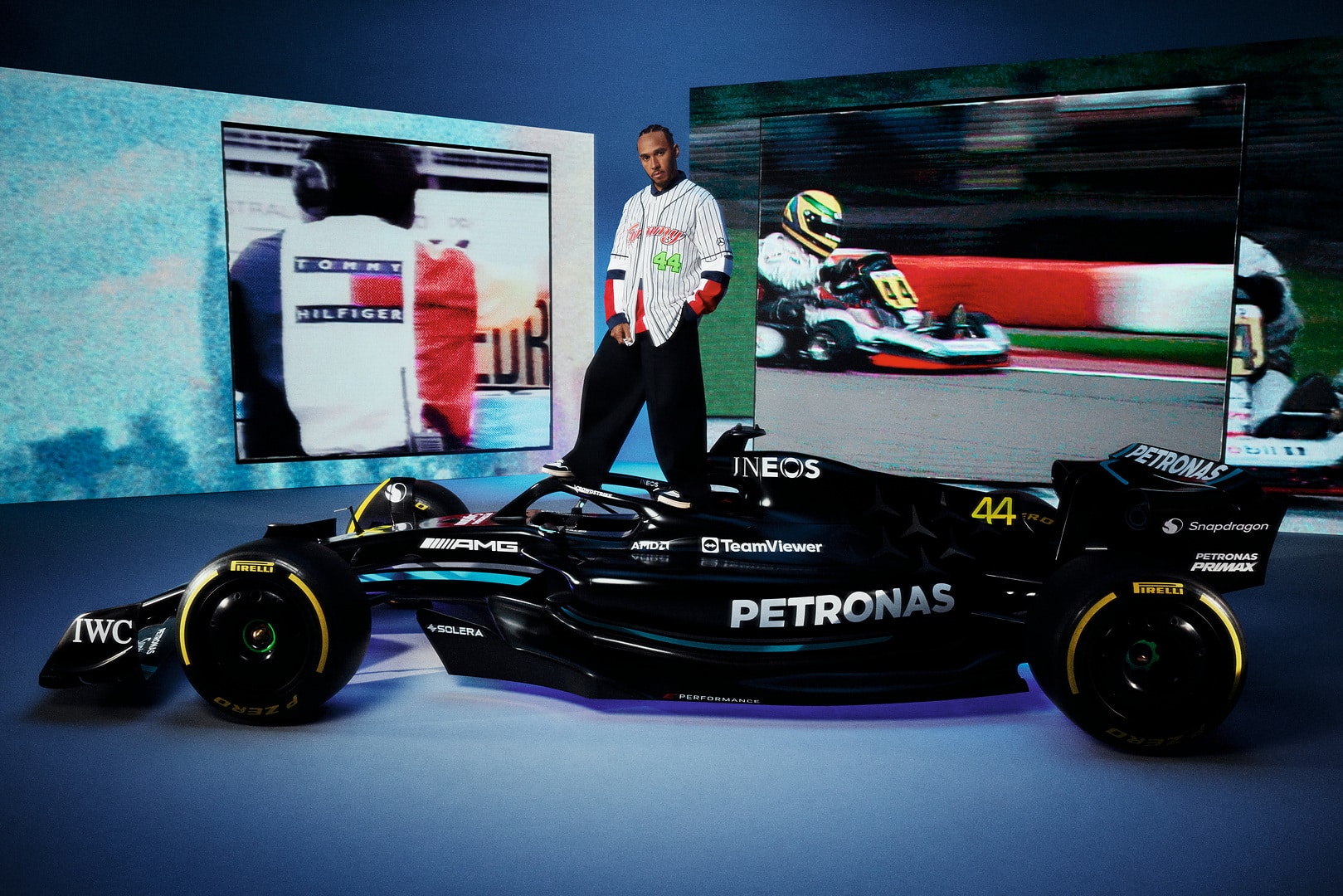
Key Players in The Formula 1 Ecosystem
Driver Influence on Partnerships
In Formula 1, drivers play an essential role in establishing and maintaining corporate partnerships. Their performance on the track and their image off the track are both crucial factors in attracting sponsors and brand partners. High-profile drivers with exceptional skills and popularity can boost the visibility of partnered brands, increasing their global reach and marketing potential. For instance, the collaboration between Lewis Hamilton and Mercedes has been fruitful for both the driver and the manufacturer, thanks largely to Hamilton’s continuous success on the track.
Role of Teams
Formula 1 teams are instrumental in forging corporate partnerships. They work closely with various stakeholders ranging from their title sponsors to technical suppliers. Teams facilitate collaboration with different businesses, for example, by showcasing their logos on cars and racing suits, and by offering exposure through their online impressions and social media growth. Successful teams can effectively demonstrate the value of their partnerships by winning races, which in turn helps them attract more investment and build stronger relationships with their partners.
Involvement of Manufacturers and Engineers
Manufacturers and engineers are other key stakeholders in the Formula 1 ecosystem, playing a central role in building and maintaining mutually beneficial partnerships. These entities may include engine suppliers like Mercedes, Ferrari, and Renault, as well as tire suppliers like Pirelli. Their ongoing investment in research, innovation, and technical expertise contributes to the success of the teams, drivers, and the Formula 1 franchise as a whole.
Overall, these collaborations between drivers, teams, manufacturers, and engineers showcase the importance of corporate partnerships in ensuring the competitiveness and sustainability of the Formula 1 ecosystem.
Indicators of Successful Partnerships
Investment Returns
In the world of Formula 1, successful corporate partnerships can be measured by the return on investment (ROI) for both parties. Increased brand visibility and improved team performance can lead to higher revenues for the company and the F1 team. Moreover, profitable business collaborations can boost the value proposition for future sponsors, attracting more investment opportunities. It is essential for both sides to track, analyze, and optimize their investment returns continually to ensure a fruitful partnership.
Team Performance
The performance of a Formula 1 team can significantly influence the success of its corporate partnerships. A partnership with a successful team boosts brand reputation and awareness for the sponsor, while the team benefits from the additional resources and finances provided. Therefore, assessing a team’s performance on the track and its development progress throughout a season is crucial in determining the effectiveness of the corporate partnership. It is vital for both parties to maintain clear communication and set realistic expectations to foster healthy collaboration centered around the team’s success.
Feedback and Evaluation
An essential aspect of successful corporate partnerships in Formula 1 is the ongoing feedback and evaluation process. Both parties should engage in regular discussions and assessments of the partnership’s performance, success, and areas requiring improvement. This could involve tracking specific metrics, such as increased audience engagement, media coverage, or amplified sales. By analyzing this feedback and implementing necessary changes, companies and F1 teams can together create a durable, well-functioning partnership that benefits both entities and ensures mutual long-term success.
Role of Sponsorship in Formula 1
Title Sponsorship
In the world of Formula 1, title sponsorship plays a crucial role in funding teams and organizing events. The title sponsor, usually a prominent corporation, partners with a team or a Grand Prix event and provides financial support in exchange for prominent branding on the team’s cars, uniforms, and other assets. This can be seen with the likes of Rolex, a Global Partner and Official Timepiece of Formula 1, in a relationship that stretches back to 2013.
In addition to financial support, title sponsors often provide valuable resources and expertise to teams. For example, Randstad, a global HR services provider, partnered with the Williams F1 team as their title sponsor for several years, offering their recruitment and HR services to the team.
Brand Awareness and Benefits
Formula 1 sponsorships provide significant benefits to both the sponsored teams and the sponsoring brands. One of the primary advantages of sponsoring a Formula 1 team is increased brand awareness. As the sport has a global audience, sponsors receive extensive visibility across a wide range of media platforms such as television broadcasts, social media, and live events.
Being an official partner of Formula 1 also has its perks, allowing the brand to use the F1 logo in their marketing campaigns and access exclusive hospitality venues during race weekends to entertain clients and customers. Additionally, these partnerships bring innovative collaborations that not only improve the racing experience but also create unique opportunities for brands to showcase their expertise, such as DHL, the Global Logistics Partner of Formula 1.
Sponsorship plays a significant role in Formula 1, with title sponsors providing valuable support to teams and grand prix events while improving brand awareness and strengthening relationships between partners. The benefits of partnerships extend beyond just funding, creating a mutually beneficial ecosystem in the Formula 1 world.
Significance of Technology
The role of technology in Formula 1 is extremely significant, as it is integral to the sport’s ongoing innovation and progress. With the rapid evolution of digital platforms and advanced simulations, Formula 1 teams are consistently looking for ways to improve their performance on the racetrack.
One key aspect of technology in Formula 1 is the use of machine learning. This cutting-edge approach allows teams to analyze vast amounts of data generated during a race, enabling them to make informed decisions and overall strategies. The partnership between Formula 1 and Oracle serves as an excellent example of technology’s impact on the sport. Oracle, the official cloud service and machine learning provider for Formula 1 since 2018, ensures that crucial data is accessible to teams in real-time.
Another important aspect is the growing influence of digital platforms on Formula 1. These platforms allow fans to engage with the races, interact with the teams, and access exclusive content. This increased digitization has further expanded the sport’s global reach and solidified its status as a leader in technology and innovation.
Simulations also play a crucial role in Formula 1, with teams using advanced systems to predict race outcomes and rehearse different scenarios. This allows them to strategize their race approach and test any modifications to their vehicles before implementing them on the actual racetrack.
Various technology companies are joining the ranks of Formula 1 sponsors or partners, leveraging the sport’s global visibility and prestige. For example, Dell Technologies and AMD both have established partnerships in Formula 1, providing teams with cutting-edge technology and equipment, further transforming the sport.
The significance of technology in Formula 1 cannot be overstated, as it is intertwined with the sport’s development, fan engagement, and global presence. As technology continues to advance, Formula 1 will keep pushing the boundaries of innovation and reinventing itself to stay at the forefront of modern engineering and entertainment.

Impact of Marketing Strategy
The marketing strategy implemented in Formula 1 has played a significant role in its success and popularity over the years. One crucial aspect of this strategy is the corporate partnerships formed by Formula 1, which involve various well-known global brands. These partnerships have not only helped promote the sport, but also contributed to its revenue generation and sustainability.
Television audience and branding have been essential components of Formula 1’s marketing strategy. With initiatives that target a global audience, the sport has successfully attracted massive viewership. This, in turn, has made the championship an attractive platform for advertisers, who recognize the potential exposure they can enjoy by associating their brands with Formula 1.
Apart from advertising, branding plays a vital role in Formula 1 through partnerships and sponsorships. Various teams collaborate with international companies who, in return, benefit from increased brand visibility and aligned marketing efforts. The combination of branding elements, along with the thrilling racing experience, creates a unique environment that sparks fan engagement and loyalty towards both the championship and its partners.
In recent years, Formula 1 has realized the importance of embracing the digital world as part of its marketing strategy. Previously, the championship somewhat lagged in adopting digital and social media platforms. However, the situation has changed significantly with the implementation of a more focused strategy to increase fan engagement through digital platforms and to attract a younger audience.
The target audience for Formula 1 consists of not only long-time motorsports enthusiasts but also casual viewers and younger generations interested in technology and innovation. The marketing strategy of Formula 1 aims to cater to this diverse group by offering engaging content, both on and off track. Through a range of initiatives, the sport intends to provide a world-class spectacle that continues to capture the imagination of existing fans and attract new followers.
The impact of the marketing strategy in Formula 1 has been crucial for the championship’s growth and global appeal. By combining advertising, branding, and digital engagement with a focus on the target audience, Formula 1 has managed to maintain its position as a leading motorsport and ensure its long-term sustainability.
Engaging Fans through Partnerships
Formula 1 has continuously adapted to new technologies and trends in order to maintain its status as a global leader in motorsports. Engaging fans through partnerships has become an essential aspect of the sport’s growth, allowing it to remain relevant and exciting for its diverse audience. In fact, thanks to an increase in these partnerships Formula 1 now ranks third, behind the Champions League and NBA, for global fan engagement.
One of the most prominent partnerships in recent years is the collaboration between Formula 1 and Salesforce. This global partnership focuses on improving fan engagement through digital channels, which has become increasingly vital as millennials make up 77% of F1’s audience growth. By leveraging Salesforce’s CRM capabilities, Formula 1 can develop personalized content and experiences for fans, maximizing their engagement with the sport.
Furthermore, Formula 1 has taken advantage of non-traditional platforms and strategies to widen its reach. Esports is one such area where motorsport has found success. By incorporating esports events, F1 has captured the attention of a new generation of fans who are passionate about competitive gaming. This has also provided additional opportunities for partnerships with organizations within the esports industry.
In addition to esports, another strategic move for fan engagement in Formula 1 is partnering with Netflix for the production of the docuseries Drive to Survive. This series offers viewers a behind-the-scenes look at the sport, its teams, drivers, and the high-stakes drama that unfold each season. By providing fans with this unique insight into F1, the partnership has generated significant interest and fostered a deeper connection with the sport.
Connecting with fans on-site at race venues is another critical aspect of fan engagement. Partnerships with global brands and local businesses have been pivotal in delivering unforgettable live experiences for F1 fans. These collaborations often include activations and fan zones, which allow fans to interact with their favorite teams, drivers, and sponsors.
Finally, Formula 1’s partnerships with broadcasters play a significant role in engaging fans around the world. By working closely with media companies, F1 can ensure high-quality coverage of its events, reaching fans through various platforms, such as television, radio, and digital streaming. Broadcasters also benefit from these partnerships, as exclusive access to digital media rights for fan engagement, in turn, increases their brand value.
In conclusion, engaging fans through partnerships remains a key focus for Formula 1 as it continues to evolve and respond to changing trends in sports and entertainment. By strategically collaborating with global partners and embracing innovative approaches, F1 maintains its position as a leader in motorsports while enhancing the fan experience.
Financial Aspect of Formula 1 Partnerships
Investment Opportunities
Formula 1 is known for its high-speed racing and cutting-edge technology. As the pinnacle of motorsports, it also offers numerous investment opportunities. Teams like McLaren, Ferrari, Aston Martin, Mercedes, and Red Bull attract significant funding from multiple sources, including corporate sponsorships, licensing deals, and merchandise sales. These investments not only help teams stay financially stable but also enable them to enhance their performance on the track. The teams work diligently to create win-win partnerships, thus attracting more investors interested in associating their brands with Formula 1’s global prestige.
Role of Sponsorship for Financial Gain
Sponsorship plays a critical role in the financial stability of Formula 1 teams. With immense costs involved in developing, manufacturing, and maintaining a competitive car and infrastructure, teams rely heavily on corporate sponsors to supply the necessary funding. Various global partners work with Formula 1 teams to create multiplatform campaigns that offer mutual benefits.
For example, F1’s plan to go carbon neutral by 2030 has changed the way sponsors view the sport while also making it more sustainable. Companies are keener to invest in environmentally friendly initiatives or technologies that can be transferred into everyday life. This attracts more sponsors to the sport, ensuring a healthy financial future for all teams.
In addition to sponsorship, teams receive an equal share of the sport’s revenues as per the Concorde Agreement. The agreement states that each team gets a certain percentage of Formula 1 earnings at the end of the season for participating in the previous two seasons. This ensures that teams can continue to invest in their operations and stay competitive in the ever-evolving world of Formula 1 racing.
While corporate partnerships and sponsorships play critical roles in securing the financial well-being of Formula 1 teams, it is essential for the teams to maintain a balance. Their raison d’etre is to perform well on the track, and having strong financial backing enables them to do that.
Exploring New Opportunities
In recent years, Formula 1 has expanded its network of corporate partnerships, capitalizing on the ever-growing interest and fanbase of the sport. Notable brands and industries such as cryptocurrency, sustainability, and energy sectors have embraced the potential of F1 as a lucrative platform to reach diverse and engaged audiences.
The introduction of cryptocurrency in Formula 1 is exemplified by the partnership with Crypto.com, an influential player in the digital currency market. This collaboration opens the door for innovative branding opportunities, as well as the exploration of new technological advancements and solutions that benefit both the sport and its stakeholders.
Sustainability is another area in which corporate partnerships are making a significant impact in Formula 1. Companies focused on eco-friendly initiatives and renewable energy are joining forces with the sport to improve its environmental footprint and promote sustainable practices. For instance, Aramco, a global integrated energy and chemicals company, is one of the Global Partners of Formula 1, working closely with the organization to develop new energy technologies and create a positive impact in the industry.
The potential for online retail giants like Amazon to join the Formula 1 corporate partnership landscape cannot be ignored. As new audiences are reached through digital channels, e-commerce can play a pivotal role in extending the reach and influence that Formula 1 has worldwide, driving consumer interest in merchandise and licensing opportunities.
Licensing remains a cornerstone of Formula 1 corporate partnerships, with brands leveraging the sport’s global platform to showcase products and services that resonate with fans. Companies in various sectors, including fashion, automotive, and even gaming, capitalize on the power of F1’s brand to build strong connections with their target audience, ultimately boosting their bottom line.
Formula 1 continues to explore new opportunities in the realm of corporate partnerships, fostering relationships with industries like cryptocurrency, sustainability, and energy, leading to mutual benefits and growth. As the sport evolves, it is evident that this trend of attracting diverse and innovative partners is set to continue, ensuring the ongoing success and appeal of Formula 1 on a global scale.
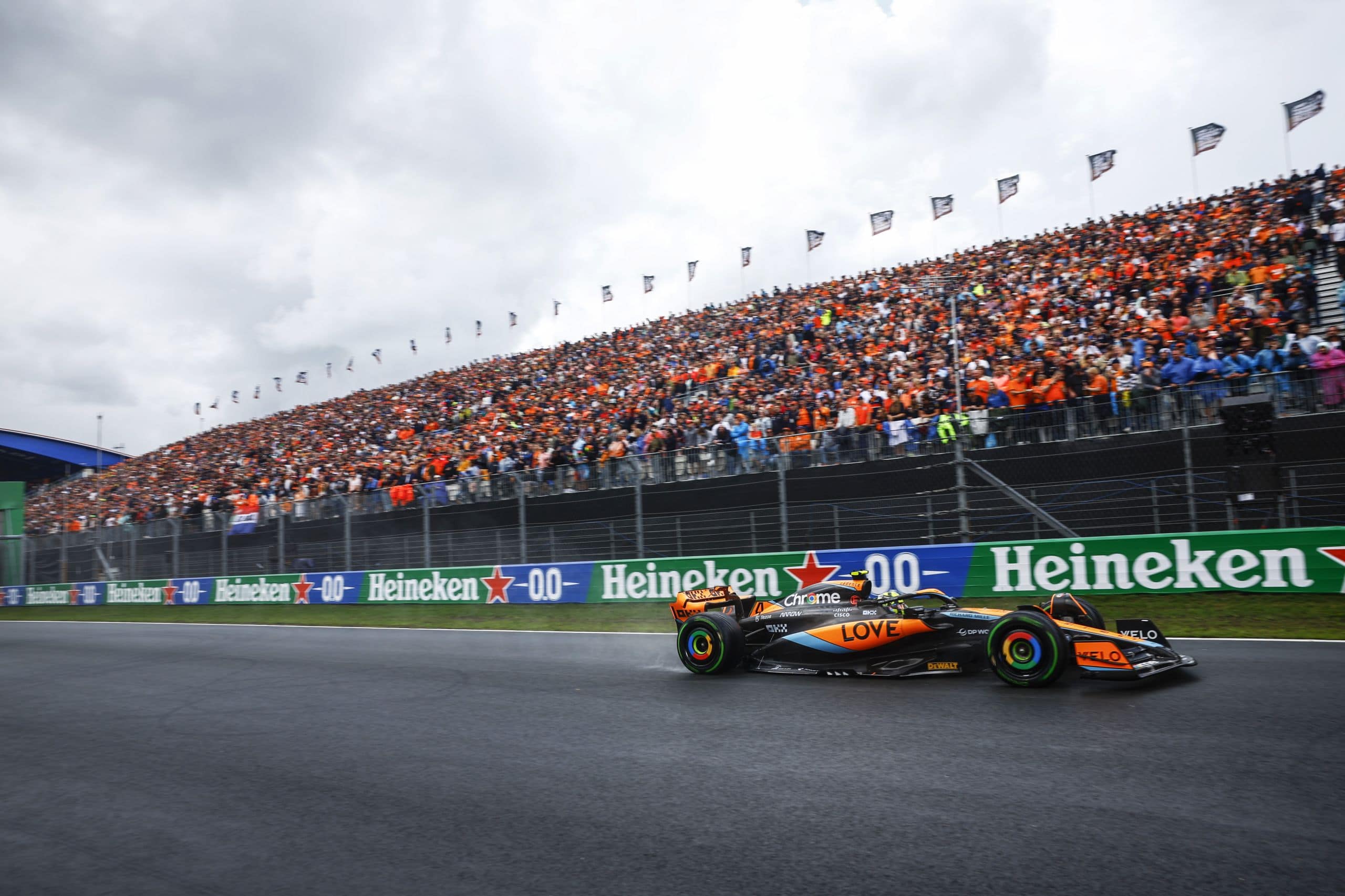
Motorsport Industry and Its Influence
The motorsport industry, including Formula 1, plays a significant role in driving innovation and competition within the automotive engineering field. This highly competitive environment leads to advances in technology, performance, and safety, all of which influence the broader automotive market.
A key aspect of the motorsport industry is the involvement of various racing associations that not only define the rules and regulations but also facilitate the growth and sustainability of these sports. These associations are integral to maintaining a high level of competition and ensuring that teams adhere to safety and ethical standards.
Additionally, corporate partnerships are essential within the Formula 1 world. Sponsorship in F1 has a substantial impact on brand awareness and engagement, with a survey conducted on F1 Fan Voice revealing that nearly 40% of the respondents follow at least one brand on social media due to the brand sponsoring a Formula 1 team.
These partnerships provide considerable financial support to teams and contribute to the overall marketing influence of the sport. As the teams receive a share of the sport’s earnings above a certain threshold, their success directly impacts their revenue streams and the overall growth of the motorsport industry.
In conclusion, the motorsport industry, especially Formula 1, has a substantial influence on the broader automotive and engineering sectors due to its extensive reach, innovative nature, and the powerful alliances formed through corporate partnerships. The support of racing associations and the fostering of competition create a platform for constant progress and advancements that have a lasting effect on the automotive world.
Corporate Partners by Industry
Footwear Industry Partners
In the world of Formula 1, corporate partnerships play a crucial role in the success of teams and the overall business. Among the various industries involved, the footwear industry has become a significant partner in Formula 1. Well-known brands such as Puma have established strong partnerships with teams, supplying cutting-edge footwear and apparel that enhance performance on and off the track.
Technology Industry Partners
Technology partners are essential to the operations and advancements in Formula 1. These companies bring a vast range of expertise to assist teams in developing, maintaining, and improving the technological aspects of the sport. Notable technology partners include companies such as Logitech and Bybit, providing state-of-the-art products and services in areas like data analysis, simulations, and gaming.
The watchmaking industry also plays a vital part in Formula 1, with brands like TAG Heuer being long-time partners of multiple drivers and teams. These partnerships showcase the precision and craftsmanship of these watchmakers and the sport’s fast-paced, time-sensitive nature.
In summary, corporate partnerships are essential for the continued growth and success of Formula 1. Both footwear and technology industry partners contribute significantly to the sport’s evolution, providing innovative products, services, and expertise that enhance teams’ performance and overall experience for fans and stakeholders alike.
Corporate Partnerships in Formula 1 – Final Thoughts
Corporate partnerships play a crucial role in the success and growth of Formula 1 as a racing spectacle. They provide the financial resources and support necessary for teams to develop their talent, optimize operations, and enhance the overall racing experience. Through these partnerships, teams can secure the best engines, drivers, and leading innovations to stay competitive in the championship.
Lessons learned from the world of Formula 1 can be beneficial for corporations looking to develop successful partnerships. A key takeaway is the importance of a multi-faceted strategy, where direction goes top-down and results are measured from the bottom-up. This approach allows partners to align their strategic objectives, goals, and milestones, ensuring both parties are working towards common targets and can measure their progress effectively.
Failures in Formula 1 often stem from a lack of adequate investment and commitment from both parties involved. As with any partnership, a strong collaboration between the team and its corporate sponsor is essential for success. By investing in their workforce, technology, and innovations, partners can ensure that the talent pool remains competitive, making the partnership more beneficial for all involved.
Liberty Media, which acquired the commercial rights to Formula 1 in 2016, has implemented initiatives to develop and maintain corporate partnerships. For instance, through strategic planning and analysis, they have continuously worked on improving the racing spectacle, increasing fan engagement, and attracting a more diverse audience. This has further solidified the value proposition for corporate partners looking to associate themselves with the Formula 1 brand.
In summary, corporate partnerships in Formula 1 are essential for the growth and development of teams, drivers, and the sport as a whole. They provide a platform for innovation, collaboration, and strategic planning, resulting in a competitive and thrilling racing experience for fans. By learning from Formula 1, businesses can apply these insights to their own partnerships, fostering success and growth in their respective industries.
Corporate Partnerships in Formula 1 – Frequently Asked Questions
What are the benefits of corporate partnerships in Formula 1?
Corporate partnerships in Formula 1 offer numerous benefits for both the teams and the sponsors. For the F1 teams, partnerships provide financial support and vital resources needed for the high costs of development and competition. They may also receive access to cutting-edge technologies from sponsors, which can enhance performance on the track. In return, sponsoring companies gain brand exposure, global recognition, and opportunities to leverage the partnership to reach new audiences through multiplatform solutions.
How are sponsorship costs determined for F1 teams?
Sponsorship costs in Formula 1 vary depending on factors such as team performance, marketability, and the level of exposure that a sponsor seeks. These costs usually range from small deals, where the sponsor’s logo appears on the car’s livery, to larger deals involving title sponsorship, where the sponsor’s name is incorporated into the team’s official identity. The bigger the investment, the higher the potential for brand visibility and promotion.
What strategies do F1 sponsors use for brand promotion?
Formula 1 sponsors use a mix of strategies to promote their brands. This may include placing their logos on team cars, driver’s suits, or crew uniforms to benefit from the global TV coverage that F1 races receive. Sponsors also engage in on-ground activations like fan zones and hospitality events to create memorable experiences for their clients. They may also leverage digital channels, social media, and content creation to engage fans and promote their association with the team.
How do tech companies benefit from F1 sponsorships?
Tech companies benefit from Formula 1 sponsorships in several ways. One primary advantage is the opportunity to showcase their cutting-edge technologies in a high-profile, competitive environment that demands the best in engineering and innovation. This allows tech companies to position themselves as leaders in their industries. Additionally, sponsorship can provide valuable feedback and testing of their products in extreme conditions, leading to improvements that benefit their consumer products. It also offers networking opportunities with other sponsors and industry leaders, potentially opening doors for future collaborations.
What is the role of sponsors in F1 team finances?
Sponsorship plays a significant role in Formula 1 team finances. The funds provided by sponsors cover a significant portion of teams’ operating costs, which include staff salaries, research and development, and the manufacture of competitive race cars. In some cases, sponsors are crucial to a team’s survival, as F1 is a demanding and expensive sport that requires continuous financial investment.
How do companies measure the success of their F1 partnerships?
Measuring the success of Formula 1 partnerships involves evaluating factors such as brand exposure, media value, return on investment (ROI), and audience engagement. Companies often analyze data from TV coverage, such as the amount of time their logo was visible during broadcasts, and the viewer reach. Measuring digital and social media engagement is also crucial, as companies track their performance metrics on different platforms, such as impressions, clicks, and audience demographics. Moreover, B2B opportunities, client satisfaction from hospitality experiences, and new business leads generated through the partnership can be used as indicators of success.


